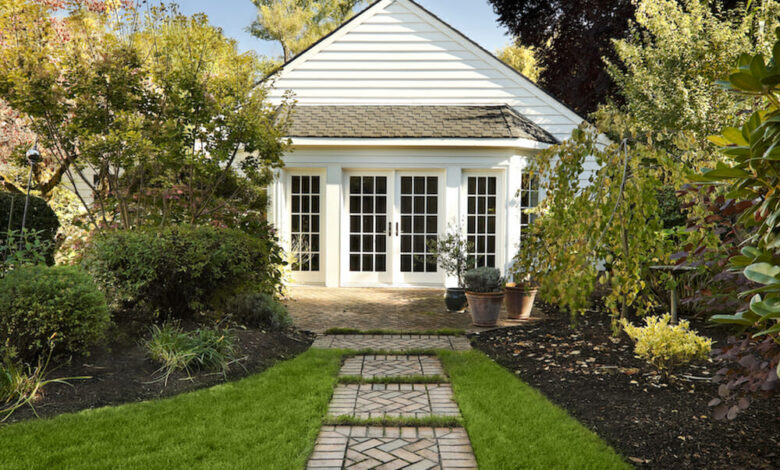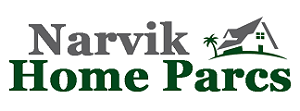Choosing the Right ADU Builders for Your Dream Backyard Home

Understanding ADUs: What Makes Them So Popular?
The Rise of Accessory Dwelling Units
Accessory Dwelling Units, or ADUs, have skyrocketed in popularity over the past decade, transforming residential landscapes across cities and suburbs alike. Once considered a niche housing option, these small units, typically located on the same lot as single-family homes, now represent an innovative solution to some of the most pressing housing challenges of our time. The surge in urbanization, coupled with rising housing costs, has driven homeowners to consider ADUs as a way to increase property value or generate rental income while simultaneously addressing the demand for affordable housing. Regulatory changes in numerous municipalities have further facilitated this shift. Cities, recognizing the need for more diverse housing options, have adjusted their zoning laws to embrace ADUs, allowing for greater flexibility in both design and construction. This has made it easier than ever for property owners to expand their living spaces or even accommodate extended families in a separate yet close setting.
Benefits of Building an ADU in Your Backyard
The advantages of adding an ADU to your property are plentiful and multifaceted, evolving well beyond mere additional space. Firstly, an ADU can serve myriad purposes—from a rental unit for passive income to a guest house for family and friends, or even a dedicated office space that fosters productivity without the commute. Financially, investing in an ADU can significantly increase your property’s value. Studies have shown that properties with ADUs often appreciate at a higher rate compared to similar homes without these units, making it a savvy investment. Moreover, they provide an opportunity for multi-generational living, allowing families to remain close while maintaining their independence. Environmentally, ADUs can be designed to minimize land use, incorporating sustainable practices that promote energy efficiency. This positions them as a viable option for reducing your carbon footprint compared to traditional home expansions.
Common Misconceptions About ADUs
Despite the growing acceptance of ADUs, several misconceptions persist that may deter potential homeowners from pursuing this option. One prevalent myth is that ADUs are strictly for rental purposes. In truth, they can accommodate a variety of needs, including spaces for aging parents or returning adult children, thereby enhancing family dynamics. Another common misconception is the belief that constructing an ADU is excessively expensive and complex. While financial considerations are important, many homeowners are surprised to learn that financing options, including construction loans and grants, may be available specifically for ADU projects. Additionally, concerns around zoning regulations can be alleviated through thorough research and consultation with local authorities and experienced builders. Understanding these nuances dispels fear and opens the door for innovative housing solutions that align with modern living.
Criteria for Selecting Top-Notch ADU Builders
Experience Matters: What to Look For
When embarking on the journey of building an ADU, selecting the right builder becomes imperative. Experience in the field can significantly affect the outcome of your project. It is essential to seek builders who not only specialize in ADUs but have also completed multiple successful projects. Such expertise often translates to a deeper understanding of construction nuances, ranging from site assessments to structural integrity. Builders with a portfolio of diverse ADU designs can showcase their ability to handle various architectural styles, ensuring your vision is brought to fruition. Inquire about their experience in navigating local building codes and zoning requirements, as this can save you significant time and effort. A well-recommended builder will typically have a solid reputation in the community, underscored by testimonials and referrals that vouch for their reliability and skill. Before making a decision, consider visiting completed projects or speaking with prior clients to gauge their satisfaction.
Innovative Designs: Crafting Unique Spaces
In a world where personalization is key, the design of your ADU should reflect both functionality and aesthetic appeal. Top-notch ADU builders prioritize innovative designs that meet the unique needs of each homeowner. During your consultation phase, assess how actively the builder engages in the brainstorming process; they should be adept at providing customized solutions that maximize space without compromising on style. Effective ADU design goes beyond mere dimensions; it encompasses smart layouts that seamlessly integrate living areas, kitchens, and bathrooms while utilizing space-saving strategies such as multi-functional furniture. Moreover, if sustainability is a concern, inquire whether the builder has experience with eco-friendly designs that incorporate natural light, energy-efficient materials, and passive solar heating. A builder who is skilled in innovative design will not only create a beautiful ADU but also one that enhances your lifestyle and aligns with your values.
Reviews and Recommendations: Trusting Your Sources
In the digital age, building trust through research is essential. When selecting ADU builders, it’s crucial to properly vet your options through reviews and recommendations. Start by utilizing online platforms such as Houzz, Yelp, and Google Reviews, where potential clients share their experiences. Pay attention to patterns in feedback; consistently positive comments about craftsmanship, reliability, and communication indicate a trustworthy builder. Furthermore, don’t hesitate to reach out to family, friends, or colleagues who may have embarked on similar projects. Personal recommendations can significantly narrow down your search, providing reliable insights into not only the quality of work but also the builder’s professionalism. Be mindful to avoid a single negative review that could skew your opinion—each project’s complexity may lead to unforeseen challenges; thus, context matters. Ultimately, a builder with a balanced portfolio of testimonials is likely to be your best bet.
Key Steps in the ADU Construction Process
Planning and Design: Laying the Groundwork
The foundation for a successful ADU project lies in meticulous planning and design. The process begins with a clear vision of what you want to achieve, supported by a well-thought-out budget. Consider how the ADU will be utilized—will it serve as rental space, family accommodation, or a home office? Each scenario requires a different design consideration. Collaborate with your chosen builder and an architect to create detailed blueprints that harmonize with both your primary residence and the surrounding environment. These initial designs should address practical aspects such as circulation and access, utilities, and landscaping. Additionally, it’s critical to ensure that your design complies with local zoning regulations, which dictate size restrictions, setbacks, and other structural requirements. Engaging with local planning commissions early in the process can preempt potential roadblocks, helping streamline approvals and prevent costly delays.
Permits and Approvals: Navigating Legal Waters
Once planning and design are complete, the next critical phase involves securing necessary permits and approvals. This can often be one of the most challenging aspects of constructing an ADU due to varying regulations across municipalities. Typically, you will need to submit your design plans to your local building department for review. Depending on your jurisdiction, this could include zoning permits, building permits, and potentially environmental clearances. It’s wise to work closely with your builder, who should have experience navigating these bureaucratic channels and can assist in preparing thorough applications that meet all regulatory requirements. Be prepared for possible revisions to your plans during the review process, as building inspectors may request modifications to ensure compliance. Staying proactive during this phase can significantly reduce the timeframe for approvals and help you stay on schedule.
From Foundation to Finishing: Monitoring the Build
As construction commences, an attentive and informed approach is key to ensuring your ADU project unfolds as planned. Begin with regular communication with your builder to receive updates and evaluations of the construction process. It’s essential to monitor progress against the timeline and budget established during the planning phase. Frequent site visits allow you to visualize the building processes and ensure that everything adheres to the approved designs. Be mindful of quality throughout the project; inspect materials and finishes upon delivery and before installation. If anomalies arise, addressing them promptly can prevent costly adjustments down the line. As the build nears completion, additional considerations such as landscaping, aesthetics, and interior design become prominent. Ensure that your builder’s finishing touches align with your vision to create a cohesive and inviting ADU space. Documentation and final inspections will be necessary to ensure the project complies with all safety codes before it is ready for occupancy.
Maximizing Your ADU’s Potential: Practical Tips and Ideas
Functional Layouts: Making Every Square Foot Count
Succinctly maximizing space is vital in ADU design, especially given their often limited square footage. A functional layout capitalizes on every inch while ensuring comfort and fluidity in the living environment. Open floor plans can create the illusion of larger spaces, allowing kitchens, dining areas, and living rooms to share common areas without walls hindering movement. Consider incorporating multi-functional furniture—such as Murphy beds, fold-out desks, or convertible sofas—that can be tucked away when not in use. Utilizing vertical space for storage—through built-in shelves or cabinetry—can decrease the footprint of necessary furnishings. Another innovative strategy is the inclusion of outdoor living spaces, such as patios or balconies, which can expand the functional living area beyond just the interior. This extension can seamlessly merge indoor and outdoor experiences while enhancing overall livability.
Sustainable Choices: Eco-Friendly Materials and Practices
As sustainability becomes increasingly paramount, choosing eco-friendly materials and construction practices for your ADU can set it apart both in functionality and eco-consciousness. Many modern builders offer options like reclaimed wood, recycled steel, and sustainable insulation materials that reduce environmental impact. Consider incorporating energy-efficient appliances, solar panels, and rainwater harvesting systems into your design, which contribute to lower utility bills and a smaller carbon footprint. Orientation is another vital factor; designing spaces that maximize natural light can lessen reliance on artificial lighting, making your ADU more energy-efficient. Additionally, landscaping with native plants reduces the need for irrigation and maintenance, promoting a robust ecosystem surrounding your new dwelling. By prioritizing sustainability, you’ll create a space that reflects modern values and supports long-term environmental stewardship.
Designing for Lifestyle: Personalizing Your ADU Experience
Your ADU should be more than just a functional space; it should reflect your personal tastes and lifestyle preferences. Start by selecting a color palette and materials that resonate with your aesthetic, whether that leans toward modern minimalism, cozy rustic, or eclectic chic. Accessorize your ADU with thoughtful decor that infuses your personality and transforms it into a home. Consider your daily habits—do you need a home office or a yoga studio, or do you envision it as an inviting retreat for guests? These preferences should guide your design choices and furniture selections. Prioritizing natural light can create a soothing ambiance, and strategic lighting fixtures can enhance moods during evening hours. Ultimately, your ADU should serve not only as a practical addition to your property but also as an enriching environment that enhances your living experience.

